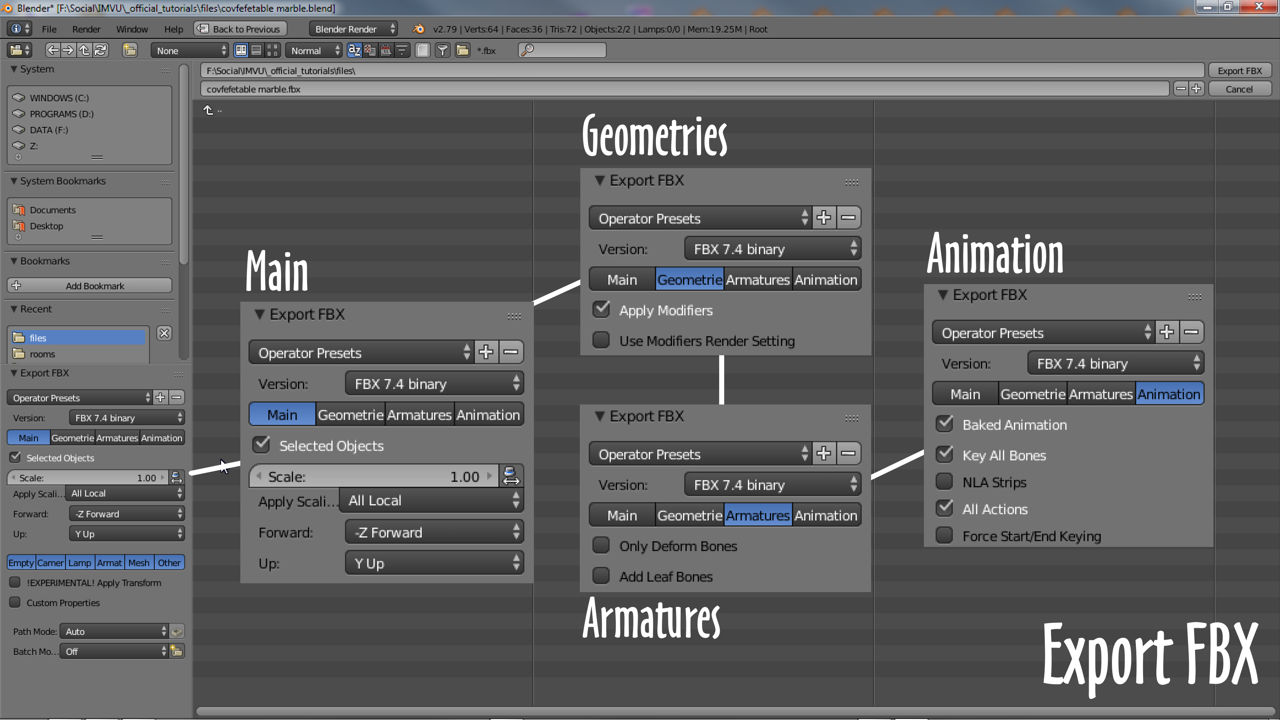In this tutorial you’ll learn about exporting from Blender to IMVU. [Download Blender FREE here.]
Exporting to FBX
Using FBX as an alternative to Cal3D, exporting individual meshes, groups of objects or entire projects to IMVU from Blender is now much easier.
Export Checklist
Export to FBX from Blender
In the main 3D View right-click or Shift+right-click the items to be exported, then from the File menu select Export » FBX (.fbx). This opens the File Browser. Browse to a location the file is to be saved and amend the file a name as necessary (defaults to the name attributed to the *.blend file itself). Once set, in Export FBX export settings bottom-left;
Main activate Selected Objects. Geometries select Apply Modifiers (optional - disable for Shape Keys/Morphs). Armatures deselect Add Leaf Bones. Animation deselect NLA Strips and optionally Force Start/End Keying.
Once done click the Export FBX button top-right to export an FBX file (*.fbx) that’s then ready for import into IMVU.

Import FBX to IMVU
Importing FBX files into IMVU differs slightly depending on the product type, largely due to differences in skeleton set up and use, importing a Pose for example, the Select Skeleton Root dialogue will be displayed whereas it might not for a furniture item or room.
To Import and FBX file into IMVU, first;
Start IMVU Studio, and begin deriving an appropriate product Go to the Asset tab and click Import Browse to and select the FBX to be imported and click the Open button


This opens the fbx file into the importer. Next, with the file loaded;
You can choose whether to set up the FBX Import, or to skip the process Change Apply scale to 0.01, if needed, and go through the Import Settings At the end of the process, click the Import button





IMVU will convert the selected data, creating a set of compatible XML files (xrf, xmf, xsf, xpf and xaf). Once done the imported products will appear under the Assets tab in IMVU Studio
